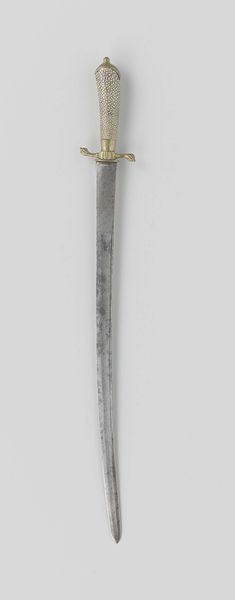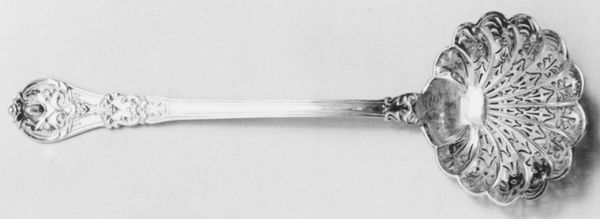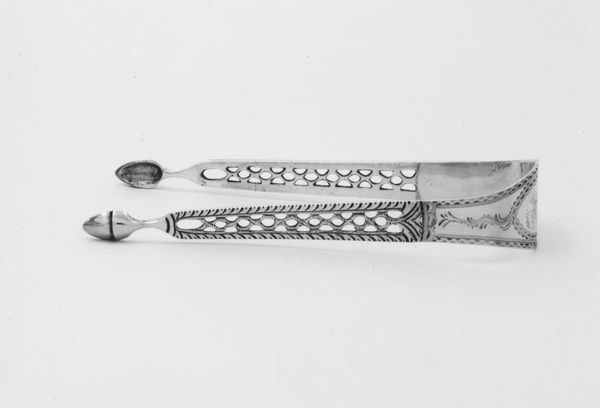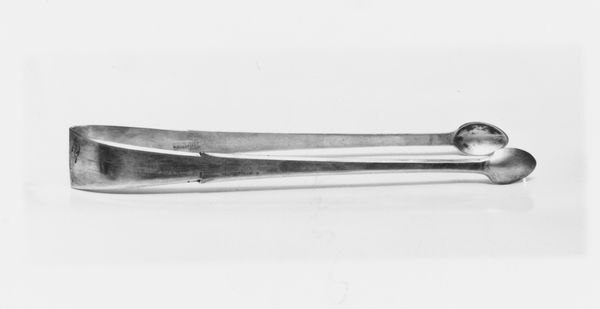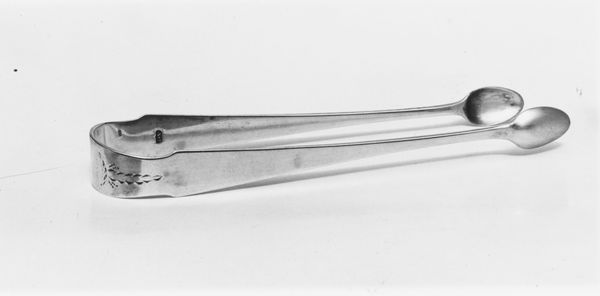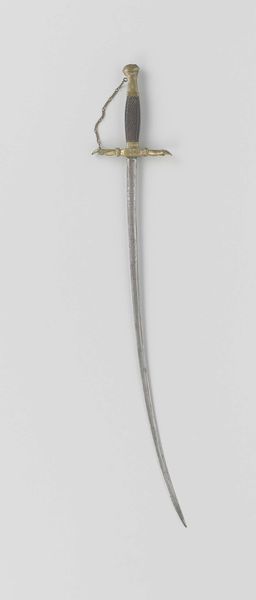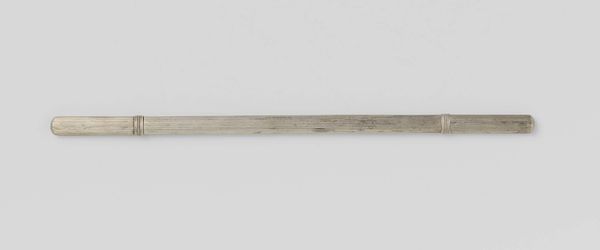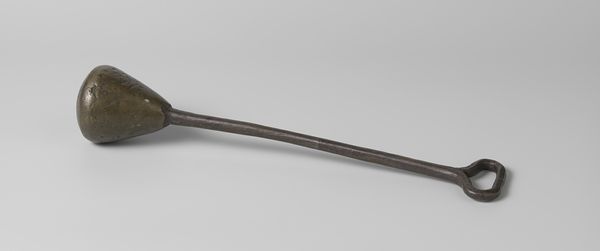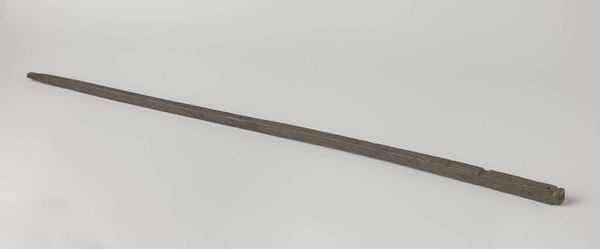
wood
#
asian-art
#
china
#
line
#
wood
#
musical-instrument
Dimensions: L: 99.1 cm (39 in.); W: 12.7 cm (5 in.)
Copyright: Public Domain
Curator: Here we have "Zheng," a piece crafted in the 19th century, currently residing at the Metropolitan Museum of Art. The K'ai-Sheng Shop of China is credited with its creation from wood. Editor: My first impression is one of austere beauty. The wood grain, the precise arrangement of the tuning pegs – it all speaks to a very deliberate artistic intention, a careful interplay of line and plane. Curator: Absolutely. The Zheng, like other stringed instruments across cultures, is imbued with deep symbolic meaning. In Chinese culture, music has long been considered a vehicle for expressing cosmic harmony and individual virtue. Its sound is a bridge to both ancestors and the divine. Editor: Indeed. Look at how the artist meticulously aligns each individual fret, leading our eyes toward the vanishing point at the instrument’s head. Each choice seems integral to its overall sonic, or perhaps I should say, visual composition. The very precise spacing suggests structure. Curator: And each detail resonates culturally, carrying whispers of stories told, histories remembered. When the Zheng plays, the plucking is said to release echoes from cultural memory. Consider the choice of materials—the wood itself bearing symbolic weight depending on its origin, perhaps representing longevity, resilience, connection to the earth. Editor: That’s a great point. The use of wood inherently establishes texture as part of its form, creating alternating highlights. Further, its monochrome presentation emphasizes these choices. Curator: Ultimately, an instrument like the Zheng embodies so much more than musical technique; it encapsulates history and belief. Editor: True. And considering the structure—the linear arrangement against its curved head—really reframes my perspective, encouraging an analysis of how individual lines combine to create an organized, impactful whole. Curator: I appreciate the added focus on visual structure—it invites us to listen to the Zheng with both our ears and our eyes, attentive to its artistic voice that speaks so deeply. Editor: And for me, understanding its formal design illuminates both the artistic intention and its potential symbolic resonance.
Comments
No comments
Be the first to comment and join the conversation on the ultimate creative platform.

